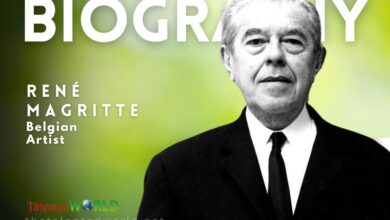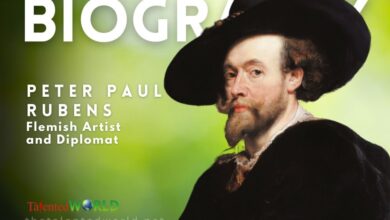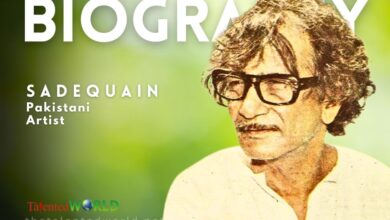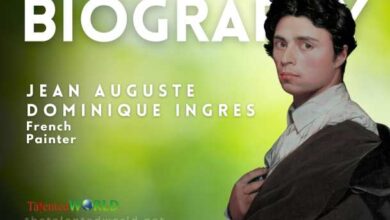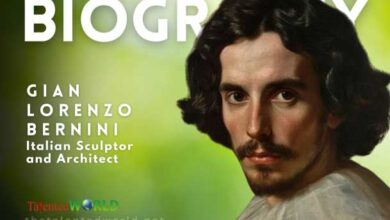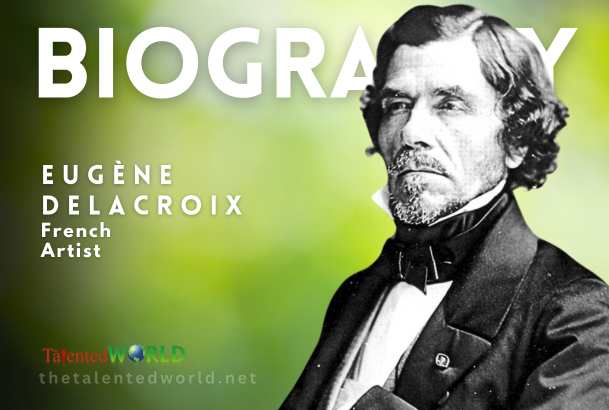
QUICK FACTS
Nationality: French
Born: April 26, 1798
Born Place: Saint-Maurice, France
Died: August 13, 1863
Death Place: Paris, France
On view: The Metropolitan Museum of Art, National Gallery of Art, etc
Periods: Romanticism, Romanesque art
Gender: Male
BIOGRAPHY
Ferdinand Victor Eugène Delacroix (26 April 1798 – 13 August 1863) was a French Romantic artist regarded from the outset of his career as the leader of the French Romantic school.
As a painter and muralist, Delacroix’s use of expressive brushstrokes and his study of the optical effects of colour profoundly shaped the work of the Impressionists, while his passion for the exotic inspired the artists of the Symbolist movement. A fine lithographer, Delacroix illustrated various works of William Shakespeare, the Scottish author Walter Scott and the German author Johann Wolfgang von Goethe.
In contrast to the Neoclassical perfectionism of his chief rival Ingres, Delacroix took for his inspiration the art of Rubens and painters of the Venetian Renaissance, with an attendant emphasis on colour and movement rather than clarity of outline and carefully modelled form. Dramatic and romantic content characterized the central themes of his maturity, and led him not to the classical models of Greek and Roman art, but to travel in North Africa, in search of the exotic. Friend and spiritual heir to Théodore Géricault, Delacroix was also inspired by Lord Byron, with whom he shared a strong identification with the “forces of the sublime”, of nature in often violent action.
However, Delacroix was given to neither sentimentality nor bombast, and his Romanticism was that of an individualist. In the words of Baudelaire, “Delacroix was passionately in love with passion, but coldly determined to express passion as clearly as possible.” Together with Ingres, Delacroix is considered one of the last old Masters of painting, and one of the few who was ever photographed.
EARLY LIFE
Eugène Delacroix was born on 26 April 1798 at Charenton-Saint-Maurice in Île-de-France, near Paris. His mother was named Victoire Oeben, the daughter of the cabinet-maker Jean-François Oeben. He had three much older siblings. Charles-Henri Delacroix (1779–1845) rose to the rank of General in the Napoleonic army. Henriette (1780–1827) married the diplomat Raymond de Verninac Saint-Maur (1762–1822). Henri was born six years later. He was killed at the Battle of Friedland on 14 June 1807.
There are medical reasons to believe that Eugène’s legitimate father, Charles-François Delacroix, was not able to procreate at the time of Eugène’s conception. Talleyrand, who was a friend of the family and successor of Charles Delacroix as Minister of Foreign Affairs, and whom the adult Eugène resembled in appearance and character, considered himself as his real father. After assuming his office as foreign minister Talleyrand, dispatched Delacroix to The Hague in the capacity of French ambassador to Batavia. Delacroix who at the time suffered from erectile dysfunction returned to Paris in early September 1797, only to find his wife pregnant. Talleyrand went on to assist Eugène in the form of numerous anonymous commissions. Throughout his career as a painter, he was protected by Talleyrand, who served successively the Restoration and king Louis-Philippe, and ultimately as ambassador of France in Great Britain, and later by Talleyrand’s grandson, Charles Auguste Louis Joseph, duc de Morny, half-brother of Napoleon III and speaker of the French House of Commons. His legitimate father, Charles Delacroix, died in 1805, and his mother in 1814, leaving 16-year-old Eugène an orphan.
His early education was at the Lycée Louis-le-Grand, and at the Lycée Pierre Corneille in Rouen where he steeped himself in the classics and won awards for drawing. In 1815 he began his training with Pierre-Narcisse Guérin in the neoclassical style of Jacques-Louis David. An early church commission, The Virgin of the Harvest (1819), displays a Raphael-esque influence, but another such commission, The Virgin of the Sacred Heart (1821), evidences a freer interpretation. It precedes the influence of the more colourful and rich style of the Flemish Baroque painter Peter Paul Rubens, and fellow French artist Théodore Géricault, whose works marked an introduction to Romanticism in art.
The impact of Géricault’s The Raft of the Medusa was profound, and stimulated Delacroix to produce his first major painting, The Barque of Dante, which was accepted by the Paris Salon in 1822. The work caused a sensation, and was largely derided by the public and officialdom, yet was purchased by the State for the Luxembourg Galleries; the pattern of widespread opposition to his work, countered by a vigorous, enlightened support, would continue throughout his life. Two years later he again achieved popular success for his The Massacre at Chios.
LEGACY
At the sale of his work in 1864, 9140 works were attributed to Delacroix, including 853 paintings, 1525 pastels and water colours, 6629 drawings, 109 lithographs, and over 60 sketch books. The number and quality of the drawings, whether done for constructive purposes or to capture a spontaneous movement, underscored his explanation, “Colour always occupies me, but drawing preoccupies me.” Delacroix produced several fine self-portraits, and a number of memorable portraits which seem to have been done purely for pleasure, among which were the portrait of fellow artist Baron Schwiter, an inspired small oil of the violinist Niccolò Paganini, and Portrait of Frédéric Chopin and George Sand, a double portrait of his friends, the composer Frédéric Chopin and writer George Sand; the painting was cut after his death, but the individual portraits survive.
On occasion Delacroix painted pure landscapes (The Sea at Dieppe, 1852) and still lifes (Still Life with Lobsters, 1826–27), both of which feature the virtuoso execution of his figure-based works. He is also well known for his Journal, in which he gave eloquent expression to his thoughts on art and contemporary life.
A generation of impressionists was inspired by Delacroix’s work. Renoir and Manet made copies of his paintings, and Degas purchased the portrait of Baron Schwiter for his private collection. His painting at the church of St. Sulpice has been called the “finest mural painting of his time”.
Contemporary Chinese artist Yue Minjun has created his own interpretation of Delacroix’s painting Massacre of Chios, which retains the same name. Yue Minjun’s painting was itself sold at Sotheby’s for nearly $4.1 million in 2007.
His pencil drawing Moorish Conversation on a Terrace was discovered as part of the Munich Art Hoard.
The contents of this page are sourced from Wikipedia article on 4 July 2020. The contents are available under the CC BY-SA 4.0 license.


